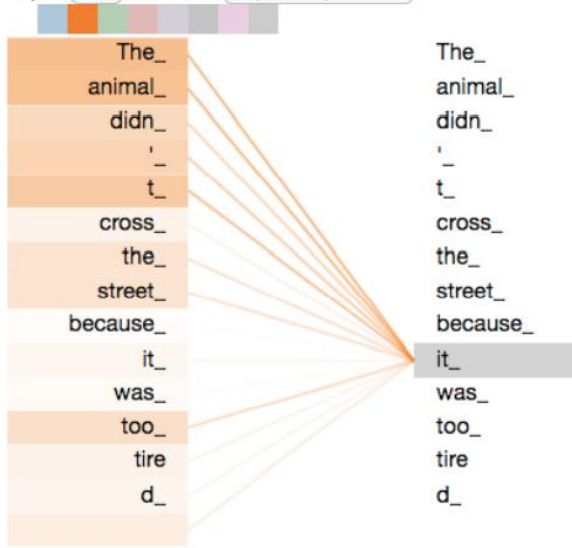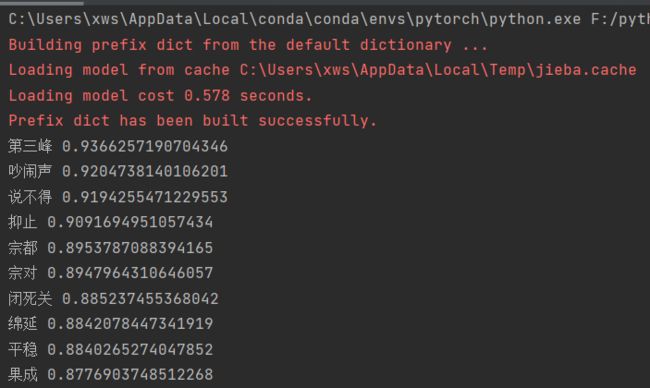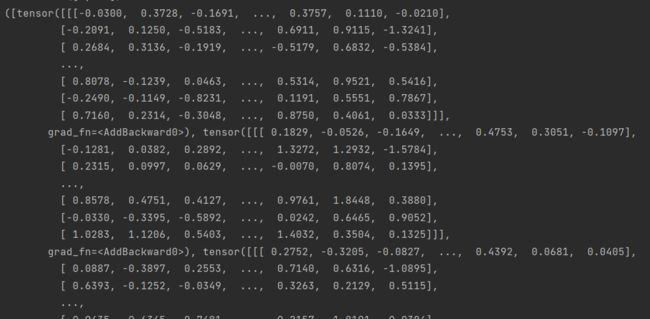- 【Python】Gym 库:于开发和比较强化学习(Reinforcement Learning, RL)算法
彬彬侠
Python基础pythonGym强化学习RLGymnasium
Gym是Python中一个广泛使用的开源库,用于开发和比较强化学习(ReinforcementLearning,RL)算法。它最初由OpenAI开发,提供标准化的环境接口,允许开发者在各种任务(如游戏、机器人控制、模拟物理系统)中测试RL算法。Gym的设计简单且灵活,适合学术研究和工业应用。2022年,Gym被整合到Gymnasium(由FaramaFoundation维护)中,成为主流的强化学习
- Python 虚拟环境完全指南
wsj__WSJ
pythonpython开发语言
为何离不开虚拟环境?在Python开发领域,虚拟环境堪称管理项目依赖的不二利器,其重要性体现在多个关键层面:项目隔离独立运行环境构建:为每一个项目量身打造专属的Python运行环境,使各个项目之间相互隔离,互不干扰。化解依赖版本冲突:有效解决不同项目对同一依赖包的版本需求不一致的难题。例如,项目A基于Django3.2进行开发,而项目B需要Django4.0才能正常运作,通过虚拟环境,两者可并行不
- python学习路线(从菜鸟到起飞)
突突突然不会编了
python学习开发语言
以下是基于2025年最新技术趋势的Python学习路线,综合多个权威资源整理而成,涵盖从零基础到进阶应用的全流程,适合不同学习目标(如Web开发、数据分析、人工智能等)的学习者。路线分为基础、进阶、实战、高级、方向拓展五个阶段,并附学习资源推荐:一、基础阶段(1-2个月)目标:掌握Python核心语法与编程思维,熟悉开发环境。环境搭建安装Python3.10+,配置PyCharm或VSCode开发
- 小白带你部署LNMP分布式部署
刘俊涛liu
分布式
目录前言一、概述二、LNMP环境部署三、配置nginx1、yum安装2、编译安装四、安装1、编译安装nginx2、网络源3、稍作优化4、修改配置文件vim/usr/local/nginx/conf/nginx.conf5、书写测试页面五、部署应用前言LNMP平台指的是将Linux、Nginx、MySQL和PHP(或者其他的编程语言,如Python、Perl等)集成在一起的一种Web服务器环境。它是
- 如何构建FunASR的本地语音识别服务
FunASR简介FunASR是阿里巴巴达摩院开源的高性能语音识别工具包,支持离线识别和实时流式识别两种模式。其核心特点包括:支持多种语音任务:ASR(自动语音识别)、VAD(语音活动检测)、标点恢复、关键词检测等。提供预训练模型:覆盖中文、英文等多语言,支持不同场景(通用、会议、直播等)。支持多种部署方式:本地Python、Docker容器、ONNX推理优化等。开源地址:GitHub-FunASR
- Python 进阶学习之全栈开发学习路线
Microi风闲
【胶水语言】Pythonpython学习开发语言
文章目录前言一、Python全栈开发技术栈1.前端技术选型2.后端框架选择3.数据库访问二、开发环境配置1.工具链推荐2.VSCode终极配置3.项目依赖管理三、现代Python工程实践1.项目结构规范2.自动化测试策略3.CI/CD流水线四、部署策略大全1.传统服务器部署2.容器化部署3.无服务器部署五、性能优化技巧1.数据库优化2.异步处理3.静态资源优化结语前言Python作为当今最流行的编
- Pycharm下载链接
Aderic
杂陈
人生苦短,我用python3.4https://download.jetbrains.8686c.com/python/pycharm-community-2018.1.1.tar.gz后续更新可能就是后面版本号码稍微差异,mark!
- python基础语法复习08——模块化编程
洛华363
pythonpython开发语言
python基础语法目录python基础语法01——基本类型python基础语法02——复合类型python基础语法03——语句构成python基础语法04——函数python基础语法05——递归及装饰器python基础语法06——类与对象python基础语法07——迭代器与生成器文章目录python基础语法目录前言一、模块(Module)1.1什么是模块?1.2模块使用1.3模块分类1.3.1系
- python基础语法复习02——复合类型
洛华363
pythonpython开发语言
python基础语法目录python基础语法基础类型文章目录python基础语法目录前言一、初识列表list1.列表基本操作1.1创建列表1.2列表运算1.3列表访问1.4列表增删2常用函数二、初识元组tuple1.元组基本操作1.1创建元组1.2元组访问1.3元组运算2.常用函数三、初识字典dict1.字典基本操作1.1创建字典1.2增删改查2常用函数四、初识集合set1.集合基本操作1.1创建
- ⚡C++ 有必要学吗?⚡我的家长有话说
司空妲命
c++开发语言
在编程教育愈发普及的当下,除了备受关注的Python,C++也进入了许多家长和孩子的视野。作为一门经典且强大的编程语言,C++在系统开发、游戏制作、嵌入式领域等有着广泛应用。然而,对于是否让孩子学习C++,家长们看法不一。有人认为它是通往高端技术领域的钥匙,也有人担忧其较高的学习难度会让孩子望而却步。今天,就让我们深入探讨C++学习的必要性。一、家长眼中的C++:潜力与顾虑交织有人疑惑:“C++现
- python3异步爬虫:asyncio + aiohttp + aiofiles(python经典编程案例)
数据知道
python3案例和总结python
更多内容请见:python3案例和总结-专栏介绍和目录文章目录1.安装依赖库2.异步爬虫的基本流程3.实现异步爬虫3.1代码实现3.2代码说明4.运行效果5.扩展功能5.1设置请求头5.2处理异常5.3限制并发数5.4爬取图片6.总结使用Python的异步编程技术(asyncio+aiohttp+aiofiles)可以实现高效的异步爬虫。以下是详细的使用指南和代码示例。1.安装依赖库首先安装所需的
- Python爬虫实战:借助代理IP破解反爬机制,批量下载哔哩哔哩高清视频
程序员威哥
最新爬虫实战项目python爬虫tcp/ip
一、前言随着视频平台的蓬勃发展,视频数据成为互联网的一个重要组成部分。特别是哔哩哔哩(B站)作为一个年轻化、内容丰富的综合性视频平台,吸引了大量用户观看、上传和分享各种形式的创作内容。在这个信息高度开放的时代,如何高效、合法地获取这些视频数据成为了一个有挑战的技术问题。哔哩哔哩的视频下载不仅受到版权保护,同时平台也使用了强大的反爬虫机制来保护用户数据和平台内容。本文将通过Python爬虫实战,利用
- Python爬虫高阶:Selenium+Scrapy+Playwright融合架构,攻克动态页面与高反爬场景
程序员威哥
python爬虫selenium
随着互联网应用的不断发展,越来越多的网站采用JavaScript动态渲染页面,常见的静态页面数据抓取方式逐渐失效。此外,高反爬技术也使得传统爬虫架构面临着更大的挑战,许多网站通过复杂的反爬机制如验证码、IP屏蔽、请求频率限制等来防止数据抓取。为了应对这些挑战,我们需要采用更为先进和灵活的爬虫架构。在此背景下,结合Selenium、Scrapy和Playwright这三种技术,能够帮助我们突破动态页
- 基于ArcPy将HDF格式栅格文件批量转为TIFF格式
疯狂学习GIS
本文介绍基于Python中ArcPy模块,实现大量HDF格式栅格图像文件批量转换为TIFF格式的方法。 首先,来看看我们想要实现的需求。 在一个名为HDF的文件夹下,有五个子文件夹;每一个子文件夹中,都存储了大量的.hdf格式的栅格遥感影像数据。 我们在其中任选一个子文件夹,来看看其中所含的文件。 我们要做的,就是将HDF文件夹下的全部子文件夹中的全部.hdf格式图像文件,一次性转换为
- Python训练 + Go优化 + C#部署:端到端AI模型的跨语言实践
威哥说编程
人工智能学习资料库pythongolangc#
在现代AI应用中,如何高效地训练、优化、并最终部署AI模型是一项复杂且具有挑战性的任务。在这一过程中,选择合适的编程语言和工具可以显著提高效率和系统的性能。Python作为AI领域的主流语言,具有丰富的深度学习框架(如PyTorch和TensorFlow),在模型训练方面处于领先地位。然而,针对计算密集型任务(如数据预处理、加密等),Go语言因其高效的并发处理和出色的性能,成为优化计算的理想选择。
- python排序算法之桶排序
华强笔记
python数据结构和算法python算法
桶排序主要适用于全是数字的列表排序代码如下:defbuckrt_sort(li,n=100,max_num=10000):bucket=[[]for_inrange(n)]
- 【无标题】
PyQt5相关论文方向扩充及技术特性解析PyQt5的核心优势PyQt5作为基于Qt框架的Python绑定库,在科研与工程应用中具备显著优势。其跨平台兼容性极强,可在Windows、macOS、Linux等主流操作系统上稳定运行,且能保持界面风格的一致性,这对开发多场景应用系统至关重要。在界面设计方面,PyQt5提供了丰富的UI组件库,从基础的按钮、文本框到高级的图表、3D控件应有尽有,同时支持Qt
- Python数据读写与组织全解析(查缺补漏篇)
Monkey的自我迭代
python学习的查缺补漏机器学习人工智能python
1高维数据由键值对类型的数据构成,可以多层嵌套。高维数据相比一维和二维数据能表达更加灵活和复杂的数据关系,可以用字典类型表示。一维数据不用字典类型来表示。2read、readline、redlines和for循环输出读取的区别直接read,读取的结果就是一个字符串,和文件中一模一样f_2=open('cpi.csv','r')print(f_2.read())指标,2015,2016,2017,居
- Python文件路径操作全面指南:从基础到高级应用
Monkey的自我迭代
python开发语言
文件路径操作是Python编程中不可或缺的核心技能,无论是数据科学、Web开发还是自动化办公,都离不开对文件路径的有效管理。本文将系统性地介绍Python中文件路径操作的各类方法,帮助您掌握这一关键技术。一、文件路径基础概念1.1路径类型解析文件路径主要分为两种类型,理解它们的区别是路径操作的基础:绝对路径:从文件系统根目录开始的完整路径,如Windows系统中的C:\Users\Username
- 分类模型(BERT)训练全流程
巴伦是只猫
人工智能分类bert数据挖掘
使用BERT实现分类模型的完整训练流程BERT(BidirectionalEncoderRepresentationsfromTransformers)是一种强大的预训练语言模型,在各种NLP任务中表现出色。下面我将详细梳理使用BERT实现文本分类模型的完整训练过程。1.准备工作1.1环境配置pipinstalltransformerstorchtensorflowpandassklearn1.2
- python排序算法之基数排序
华强笔记
python数据结构和算法python算法
#代码如下:'''基数排序:1.把数据分为10个桶,以为数字有0-9这10个2.依次把数据的个位,十位,百位等等各个位数的数据进行分桶排序,放在这10个桶中3.最大的数有k位,则循环k次4.时间复杂度O(kn),空间复杂度O(k+n),其中k=log10(n)+1'''defradixs_sort(li):max_num=max(li)it=0while10**it<=max_num:bucket
- python折半查找算法_python二分查找代码 试用递归法编写python程序实现折半查找算法...
python二分查找算法函数bi_search(),该函数实现检回忆,很美却很伤;回忆只是回不到过去的记忆。输入格式:第一行为正整数n接下来若干行为待查找的数字,每行输入一个总是女人为了天长地久而烦恼,男人却可以洒脱地出乎意料。defprime(n):ifnend:return-1mid=(start+end)//2ifprimelist[mid]==prime:returnmidelifprim
- PyCharm高效入门指南:从零开始掌握Python开发利器
软考和人工智能学堂
Python开发经验强化学习PyCharm
引言PyCharm是JetBrains公司推出的一款强大的Python集成开发环境(IDE),被全球数百万Python开发者所青睐。无论你是Python初学者还是经验丰富的开发者,掌握PyCharm都能显著提升你的开发效率。本文将带你从零开始,全面了解PyCharm的核心功能和使用技巧。1.PyCharm的安装与配置1.1下载与安装首先访问JetBrains官网下载PyCharm。PyCharm有
- python作业
陈小铃子
python开发语言
基础练习练习目标函数01.计算车费题目描述小红打车,起步价8元(3公里),每公里收费2元,她打车行驶了n公里,通过函数封装并计算车费输入描述输入一个公里数输出描述输出应付车费示例输入:5输出:12defcalculate_fare(distance):base_price=8#起步价per_km_cost=2#每公里费用min_distance=3#最小计费距离ifdistance0:sum_nu
- 【Python】(三)面试题和Py基础题
戏精亿点点菜
面试职场和发展python
1.技术面试题(1)解释Linux中的进程、线程和守护进程的概念,以及如何管理它们?答:进程(Process):进程是操作系统中资源分配的基本单位,是正在运行的程序的实例。每个进程都有自己的内存空间、文件描述符和执行上下文。管理:①查看进程:使用ps、top、htop等命令查看当前运行的进程。②启动进程:通过命令行或脚本启动新进程。③终止进程:使用kill命令发送信号终止进程,例如kill-9PI
- python小工具:测内网服务器网速和延迟
秃了也弱了。
python大家庭服务器pythonjava
文章目录一、使用1、代码2、使用3、注意事项一、使用1、代码importargparseimportsocketimporttimeimportsubprocessimportreimportsysdefmeasure_latency(host):#使用ping命令测量延迟try:#根据操作系统选择ping参数ifsys.platform.startswith('win'):output=subp
- Python面试题-6
编织幻境的妖
python服务器开发语言
1.请解释Python中的动态类型。Python中的动态类型Python是一种动态类型语言,这意味着你不需要在编程时声明变量的类型,而是在运行时自动推断类型。在Python中,变量的类型是在程序运行时决定的,这意味着同一个变量可以在不改变其类型的情形下被赋予不同类型的值。动态类型的优点在于它提高了编程的灵活性,因为你不需要预先确定数据的类型,可以更容易地写出简洁的代码。然而,这也可能导致运行时错误
- 火爆全网的条形竞赛图,Python轻松实现
统计学家
image这个动图叫条形竞赛图,非常适合制作随时间变动的数据。我已经用streamlit+bar_chart_race实现了,然后白嫖了heroku的服务器,大家通过下面的网址上传csv格式的表格就可以轻松制作条形竞赛图,生成的视频可以保存本地。https://bar-chart-race-app.herokuapp.com/本文我将实现过程介绍一下,白嫖服务器+部署留在下期再讲。纯matplot
- 【无标题】Python---day9 模块化编程概念(模块、包、导入)及常见系统模块总结和第三方模块管理
AnAn__kang
pythonjava服务器
系列文章目录前言跟着博主学Python,今天我们来到了第九天的学习,模块化编程的概念。Python作为一门编程语言,本身就是用于对模块以及各种包的使用来达到我们自己想到创作的目的。所以今天博主就给大家盘点一下有关于各种常见的包以及如何进行导入的。一.模块Module,模块1.1基本概念定义:模块是一个Python文件,每个.py.py.py文件就是一个模块。作用:用于组织代码,避免代码重复,提高复
- Python --- day 10 Opencv模块的使用
AnAn__kang
pythonopencv开发语言
系列文章目录前言今天博主带大家进入Opencv的学习,这是一个专门针对处理图像和视频的一个模块,大家以理解为主,增强自己的编程思维,再后续我们训练模型时会大批量的处理图片时会经常用到这个模块。1OpenCV介绍OpenCV(开放源代码计算机视觉库)是一个开源的计算机视觉和机器学习软件库。由一系列C++类和函数构成,用于图像处理、计算机视觉领域的算法实现。1.1OpenCV优势**开源免费:**完全
- Java实现的基于模板的网页结构化信息精准抽取组件:HtmlExtractor
yangshangchuan
信息抽取HtmlExtractor精准抽取信息采集
HtmlExtractor是一个Java实现的基于模板的网页结构化信息精准抽取组件,本身并不包含爬虫功能,但可被爬虫或其他程序调用以便更精准地对网页结构化信息进行抽取。
HtmlExtractor是为大规模分布式环境设计的,采用主从架构,主节点负责维护抽取规则,从节点向主节点请求抽取规则,当抽取规则发生变化,主节点主动通知从节点,从而能实现抽取规则变化之后的实时动态生效。
如
- java编程思想 -- 多态
百合不是茶
java多态详解
一: 向上转型和向下转型
面向对象中的转型只会发生在有继承关系的子类和父类中(接口的实现也包括在这里)。父类:人 子类:男人向上转型: Person p = new Man() ; //向上转型不需要强制类型转化向下转型: Man man =
- [自动数据处理]稳扎稳打,逐步形成自有ADP系统体系
comsci
dp
对于国内的IT行业来讲,虽然我们已经有了"两弹一星",在局部领域形成了自己独有的技术特征,并初步摆脱了国外的控制...但是前面的路还很长....
首先是我们的自动数据处理系统还无法处理很多高级工程...中等规模的拓扑分析系统也没有完成,更加复杂的
- storm 自定义 日志文件
商人shang
stormclusterlogback
Storm中的日志级级别默认为INFO,并且,日志文件是根据worker号来进行区分的,这样,同一个log文件中的信息不一定是一个业务的,这样就会有以下两个需求出现:
1. 想要进行一些调试信息的输出
2. 调试信息或者业务日志信息想要输出到一些固定的文件中
不要怕,不要烦恼,其实Storm已经提供了这样的支持,可以通过自定义logback 下的 cluster.xml 来输
- Extjs3 SpringMVC使用 @RequestBody 标签问题记录
21jhf
springMVC使用 @RequestBody(required = false) UserVO userInfo
传递json对象数据,往往会出现http 415,400,500等错误,总结一下需要使用ajax提交json数据才行,ajax提交使用proxy,参数为jsonData,不能为params;另外,需要设置Content-type属性为json,代码如下:
(由于使用了父类aaa
- 一些排错方法
文强chu
方法
1、java.lang.IllegalStateException: Class invariant violation
at org.apache.log4j.LogManager.getLoggerRepository(LogManager.java:199)at org.apache.log4j.LogManager.getLogger(LogManager.java:228)
at o
- Swing中文件恢复我觉得很难
小桔子
swing
我那个草了!老大怎么回事,怎么做项目评估的?只会说相信你可以做的,试一下,有的是时间!
用java开发一个图文处理工具,类似word,任意位置插入、拖动、删除图片以及文本等。文本框、流程图等,数据保存数据库,其余可保存pdf格式。ok,姐姐千辛万苦,
- php 文件操作
aichenglong
PHP读取文件写入文件
1 写入文件
@$fp=fopen("$DOCUMENT_ROOT/order.txt", "ab");
if(!$fp){
echo "open file error" ;
exit;
}
$outputstring="date:"." \t tire:".$tire."
- MySQL的btree索引和hash索引的区别
AILIKES
数据结构mysql算法
Hash 索引结构的特殊性,其 检索效率非常高,索引的检索可以一次定位,不像B-Tree 索引需要从根节点到枝节点,最后才能访问到页节点这样多次的IO访问,所以 Hash 索引的查询效率要远高于 B-Tree 索引。
可能很多人又有疑问了,既然 Hash 索引的效率要比 B-Tree 高很多,为什么大家不都用 Hash 索引而还要使用 B-Tree 索引呢
- JAVA的抽象--- 接口 --实现
百合不是茶
抽象 接口 实现接口
//抽象 类 ,方法
//定义一个公共抽象的类 ,并在类中定义一个抽象的方法体
抽象的定义使用abstract
abstract class A 定义一个抽象类 例如:
//定义一个基类
public abstract class A{
//抽象类不能用来实例化,只能用来继承
//
- JS变量作用域实例
bijian1013
作用域
<script>
var scope='hello';
function a(){
console.log(scope); //undefined
var scope='world';
console.log(scope); //world
console.log(b);
- TDD实践(二)
bijian1013
javaTDD
实践题目:分解质因数
Step1:
单元测试:
package com.bijian.study.factor.test;
import java.util.Arrays;
import junit.framework.Assert;
import org.junit.Before;
import org.junit.Test;
import com.bijian.
- [MongoDB学习笔记一]MongoDB主从复制
bit1129
mongodb
MongoDB称为分布式数据库,主要原因是1.基于副本集的数据备份, 2.基于切片的数据扩容。副本集解决数据的读写性能问题,切片解决了MongoDB的数据扩容问题。
事实上,MongoDB提供了主从复制和副本复制两种备份方式,在MongoDB的主从复制和副本复制集群环境中,只有一台作为主服务器,另外一台或者多台服务器作为从服务器。 本文介绍MongoDB的主从复制模式,需要指明
- 【HBase五】Java API操作HBase
bit1129
hbase
import java.io.IOException;
import org.apache.hadoop.conf.Configuration;
import org.apache.hadoop.hbase.HBaseConfiguration;
import org.apache.hadoop.hbase.HColumnDescriptor;
import org.apache.ha
- python调用zabbix api接口实时展示数据
ronin47
zabbix api接口来进行展示。经过思考之后,计划获取如下内容: 1、 获得认证密钥 2、 获取zabbix所有的主机组 3、 获取单个组下的所有主机 4、 获取某个主机下的所有监控项
- jsp取得绝对路径
byalias
绝对路径
在JavaWeb开发中,常使用绝对路径的方式来引入JavaScript和CSS文件,这样可以避免因为目录变动导致引入文件找不到的情况,常用的做法如下:
一、使用${pageContext.request.contextPath}
代码” ${pageContext.request.contextPath}”的作用是取出部署的应用程序名,这样不管如何部署,所用路径都是正确的。
- Java定时任务调度:用ExecutorService取代Timer
bylijinnan
java
《Java并发编程实战》一书提到的用ExecutorService取代Java Timer有几个理由,我认为其中最重要的理由是:
如果TimerTask抛出未检查的异常,Timer将会产生无法预料的行为。Timer线程并不捕获异常,所以 TimerTask抛出的未检查的异常会终止timer线程。这种情况下,Timer也不会再重新恢复线程的执行了;它错误的认为整个Timer都被取消了。此时,已经被
- SQL 优化原则
chicony
sql
一、问题的提出
在应用系统开发初期,由于开发数据库数据比较少,对于查询SQL语句,复杂视图的的编写等体会不出SQL语句各种写法的性能优劣,但是如果将应用系统提交实际应用后,随着数据库中数据的增加,系统的响应速度就成为目前系统需要解决的最主要的问题之一。系统优化中一个很重要的方面就是SQL语句的优化。对于海量数据,劣质SQL语句和优质SQL语句之间的速度差别可以达到上百倍,可见对于一个系统
- java 线程弹球小游戏
CrazyMizzz
java游戏
最近java学到线程,于是做了一个线程弹球的小游戏,不过还没完善
这里是提纲
1.线程弹球游戏实现
1.实现界面需要使用哪些API类
JFrame
JPanel
JButton
FlowLayout
Graphics2D
Thread
Color
ActionListener
ActionEvent
MouseListener
Mouse
- hadoop jps出现process information unavailable提示解决办法
daizj
hadoopjps
hadoop jps出现process information unavailable提示解决办法
jps时出现如下信息:
3019 -- process information unavailable3053 -- process information unavailable2985 -- process information unavailable2917 --
- PHP图片水印缩放类实现
dcj3sjt126com
PHP
<?php
class Image{
private $path;
function __construct($path='./'){
$this->path=rtrim($path,'/').'/';
}
//水印函数,参数:背景图,水印图,位置,前缀,TMD透明度
public function water($b,$l,$pos
- IOS控件学习:UILabel常用属性与用法
dcj3sjt126com
iosUILabel
参考网站:
http://shijue.me/show_text/521c396a8ddf876566000007
http://www.tuicool.com/articles/zquENb
http://blog.csdn.net/a451493485/article/details/9454695
http://wiki.eoe.cn/page/iOS_pptl_artile_281
- 完全手动建立maven骨架
eksliang
javaeclipseWeb
建一个 JAVA 项目 :
mvn archetype:create
-DgroupId=com.demo
-DartifactId=App
[-Dversion=0.0.1-SNAPSHOT]
[-Dpackaging=jar]
建一个 web 项目 :
mvn archetype:create
-DgroupId=com.demo
-DartifactId=web-a
- 配置清单
gengzg
配置
1、修改grub启动的内核版本
vi /boot/grub/grub.conf
将default 0改为1
拷贝mt7601Usta.ko到/lib文件夹
拷贝RT2870STA.dat到 /etc/Wireless/RT2870STA/文件夹
拷贝wifiscan到bin文件夹,chmod 775 /bin/wifiscan
拷贝wifiget.sh到bin文件夹,chm
- Windows端口被占用处理方法
huqiji
windows
以下文章主要以80端口号为例,如果想知道其他的端口号也可以使用该方法..........................1、在windows下如何查看80端口占用情况?是被哪个进程占用?如何终止等. 这里主要是用到windows下的DOS工具,点击"开始"--"运行",输入&
- 开源ckplayer 网页播放器, 跨平台(html5, mobile),flv, f4v, mp4, rtmp协议. webm, ogg, m3u8 !
天梯梦
mobile
CKplayer,其全称为超酷flv播放器,它是一款用于网页上播放视频的软件,支持的格式有:http协议上的flv,f4v,mp4格式,同时支持rtmp视频流格 式播放,此播放器的特点在于用户可以自己定义播放器的风格,诸如播放/暂停按钮,静音按钮,全屏按钮都是以外部图片接口形式调用,用户根据自己的需要制作 出播放器风格所需要使用的各个按钮图片然后替换掉原始风格里相应的图片就可以制作出自己的风格了,
- 简单工厂设计模式
hm4123660
java工厂设计模式简单工厂模式
简单工厂模式(Simple Factory Pattern)属于类的创新型模式,又叫静态工厂方法模式。是通过专门定义一个类来负责创建其他类的实例,被创建的实例通常都具有共同的父类。简单工厂模式是由一个工厂对象决定创建出哪一种产品类的实例。简单工厂模式是工厂模式家族中最简单实用的模式,可以理解为是不同工厂模式的一个特殊实现。
- maven笔记
zhb8015
maven
跳过测试阶段:
mvn package -DskipTests
临时性跳过测试代码的编译:
mvn package -Dmaven.test.skip=true
maven.test.skip同时控制maven-compiler-plugin和maven-surefire-plugin两个插件的行为,即跳过编译,又跳过测试。
指定测试类
mvn test
- 非mapreduce生成Hfile,然后导入hbase当中
Stark_Summer
maphbasereduceHfilepath实例
最近一个群友的boss让研究hbase,让hbase的入库速度达到5w+/s,这可愁死了,4台个人电脑组成的集群,多线程入库调了好久,速度也才1w左右,都没有达到理想的那种速度,然后就想到了这种方式,但是网上多是用mapreduce来实现入库,而现在的需求是实时入库,不生成文件了,所以就只能自己用代码实现了,但是网上查了很多资料都没有查到,最后在一个网友的指引下,看了源码,最后找到了生成Hfile
- jsp web tomcat 编码问题
王新春
tomcatjsppageEncode
今天配置jsp项目在tomcat上,windows上正常,而linux上显示乱码,最后定位原因为tomcat 的server.xml 文件的配置,添加 URIEncoding 属性:
<Connector port="8080" protocol="HTTP/1.1"
connectionTi




